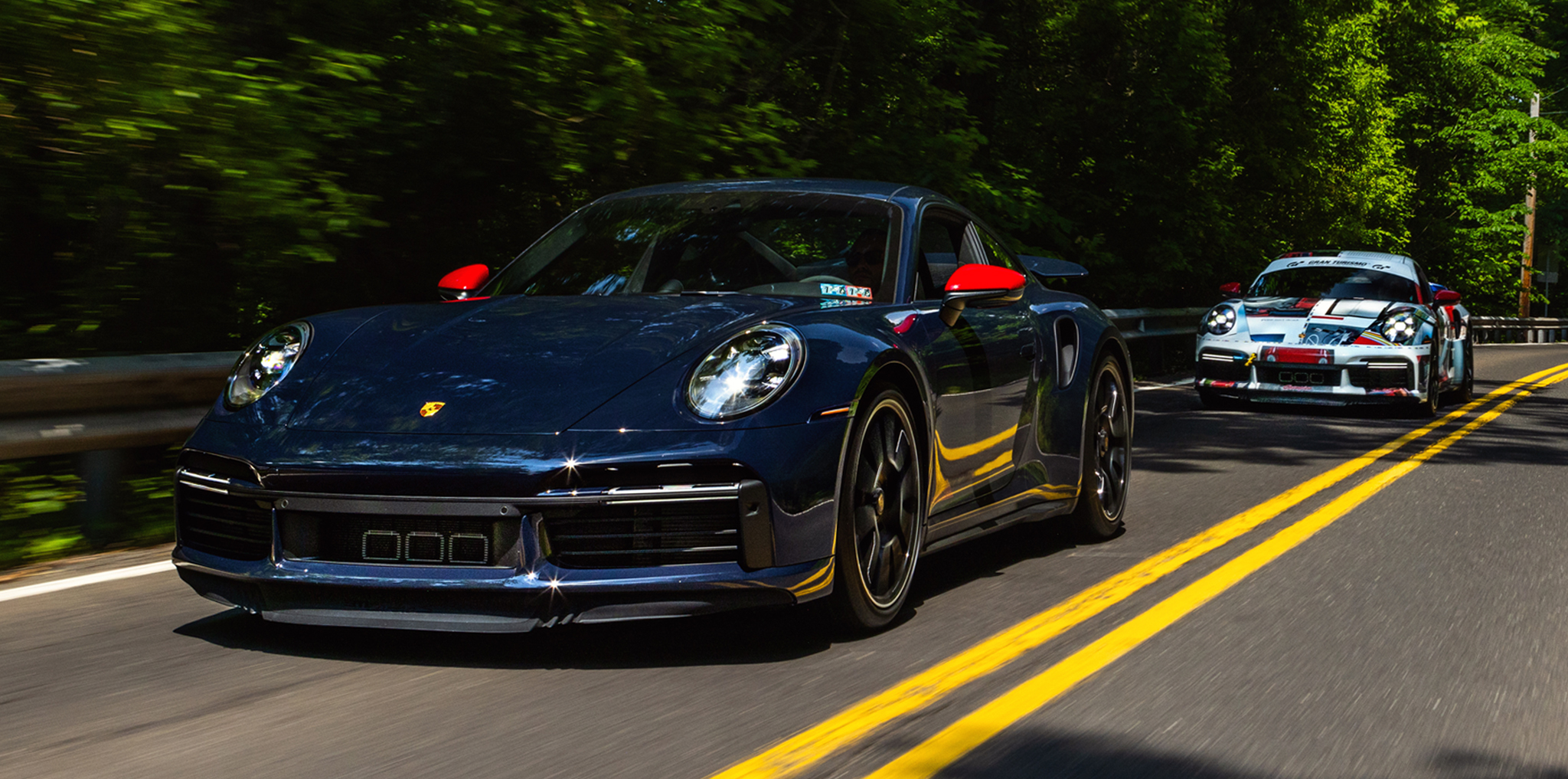The DSPORT Tokyo Auto Salon Tour from last year really was a completely jam-packed trip, and I only published articles about the automotive-related portions of it. Everything I learned about Japanese culture, food, and their respect for one another was even more enlightening—but this website isn’t about that. If you’re curious to learn about the other auto-related activities from this trip, you can view each article here, here, here, here, and here. For now, let’s get right into the last day.
Daikoku Futo Parking Area

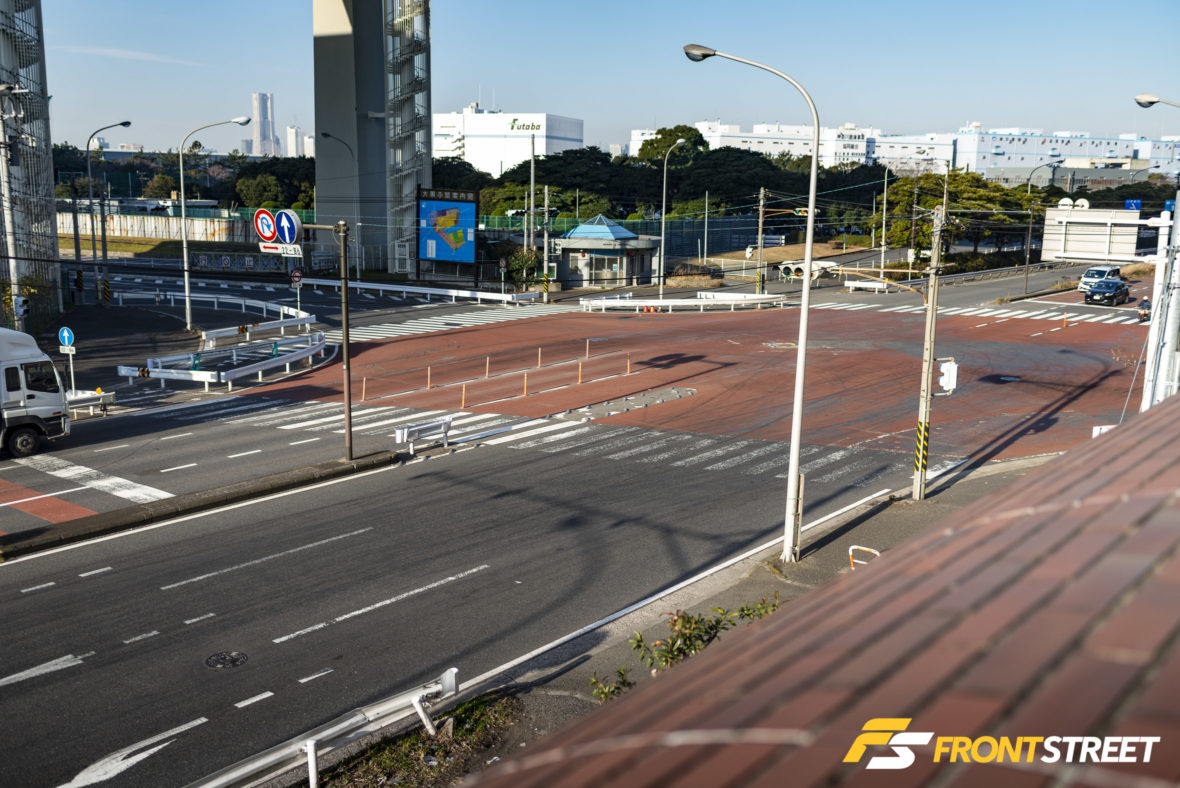
This stop didn’t offer quite the ideal timing to witness the famous spectacle of Japanese automotive culture, but still a very cool stop nonetheless. Daikoku Futo Parking Area is one of the city of Tokyo’s highway rest areas, which consists of a parking lot and convenience store and is designed to offer a break to the many occupants who travel their system of racetrack-like roads regularly.



This lot comes to life at nighttime, as various groups of automobiles from all over the Tokyo Bay area will congregate for a wild atmosphere filled with just about every kind of custom automotive trend possible—and even some late night drifting. During the morning hours when we stopped (about 7:30 am), the cars were scant but we stumbled onto a pair of Mazdas with their owners still asleep in their cars from the night before.




And this wild Mitsubishi GTO (3000GT) with tons of exterior additions unloaded its passengers for a trip inside the store. Notable modifications on this included Work Meister M1 wheels, and a forgotten trend here in the states: Lamborghini-style doors.


I spotted this JZX100 Chaser as we all piled back onto the bus and headed for our second location of the day…
TEIN Japan Headquarters






Located in the Kanagawa Prefecture just outside of Yokohama is TEIN, INC.’s company headquarters and suspension manufacturing facility. We arrived ahead of schedule, exited the bus, and were greeted outside the facility’s doors by physical versions of the company’s adorable mascots Dampatty and Dampachi. TEIN had organized their demo vehicles and employee cars in fine fashion outside of their R&D bays, so we were able to kill some time before the tour started.



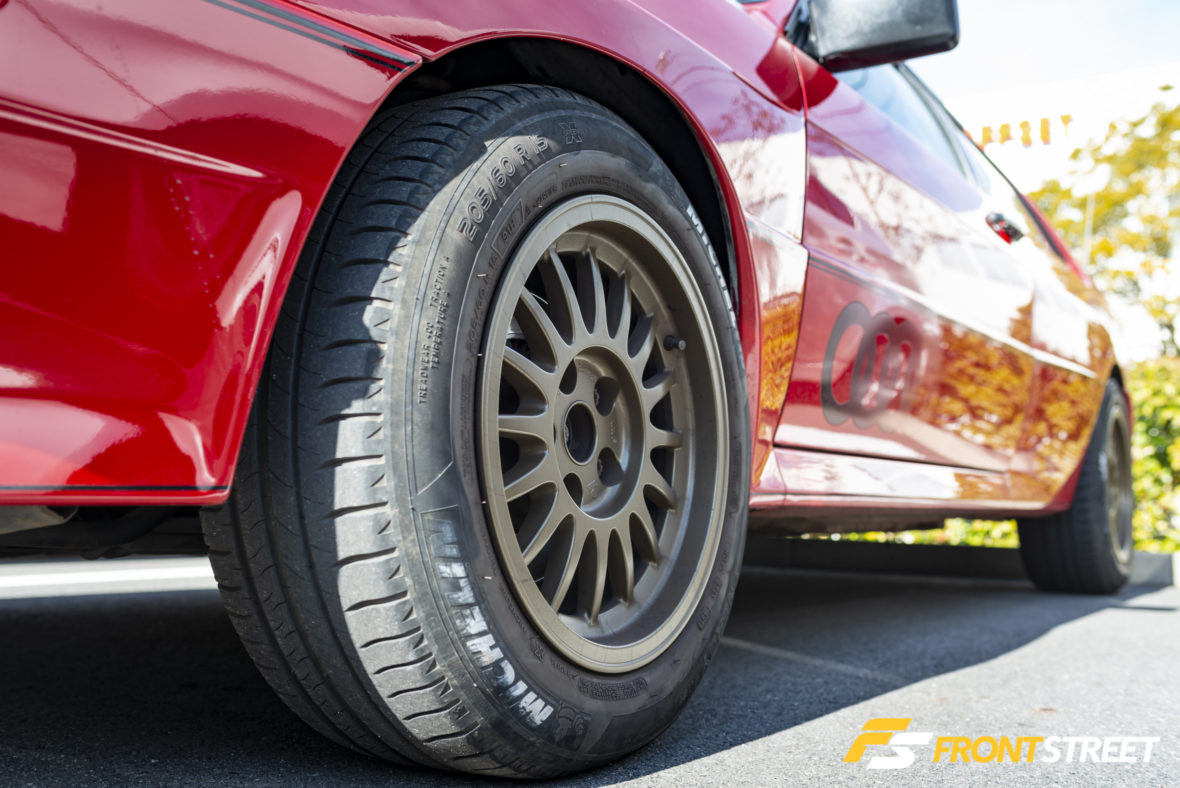



It was cool to see what some of the workers at their headquarters drove, like a sleek red left-hand-drive Audi S1 Quattro, and to see the iconic livery on the numerous demo cars like the company’s Honda N-Box.

After checking out the cars outside, we were invited in for an informational presentation and a full tour of the manufacturing process, but due to sensitive information located throughout the building, I was forbidden to document the tour with pictures. I can’t talk about much that went on inside, but I can tell you that there are extreme levels of scrutiny, quality control, and attention to detail paid at every step of the coilover production process. It was an incredible experience to see first-hand and completely sold me on the quality of the company’s products.


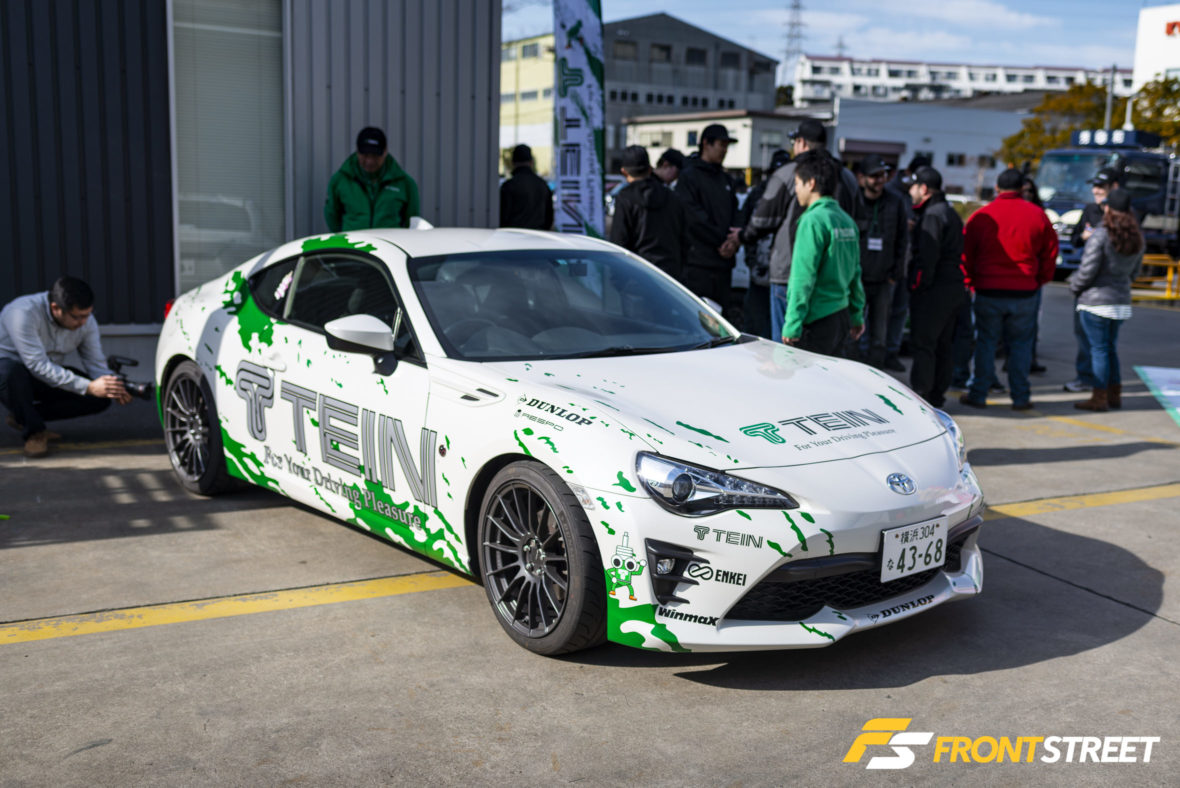
Before leaving the grounds, we all assembled for a large group picture used by TEIN to document our visit. It was amazing to see the inner workings of such an incredibly influential company, and to see how they utilize such a small building for such a wide variety of suspension design, research, development, testing, and production.
Tomei Powered Japan




As we exited the bus at the Tomei Powered headquarters, the glimpse of the quite perfect Voltex-equipped demo car on the street was a good sign we were in the right spot. We were separated into a few smaller groups to make touring the facility a little easier. Due to available space limitations in and around the city of Tokyo, all of the companies in these areas come up with clever ways to utilize every inch of space available to them. I was actually very surprised that a company as big as Tomei operates out of such a confined space.

Outside the building, Tomei packed a row of cars down its driveway, each equipped with various Tomei products including its titanium exhaust systems.
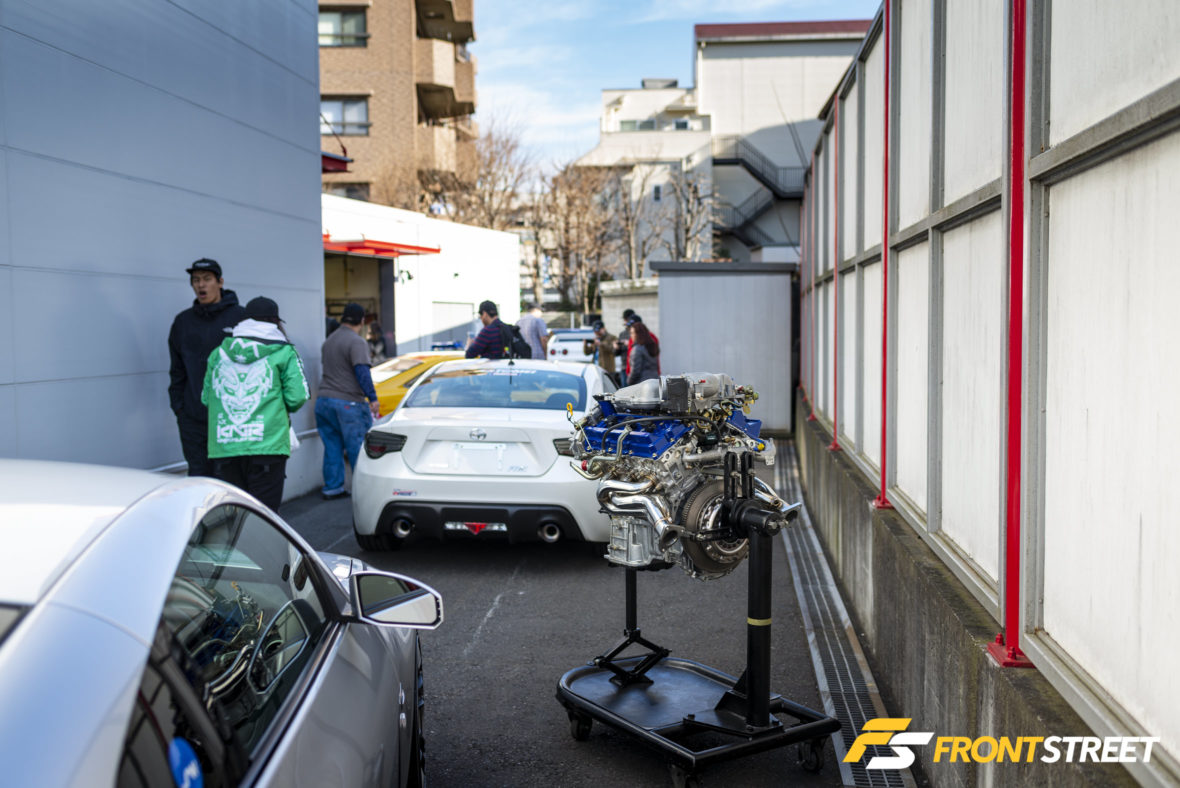

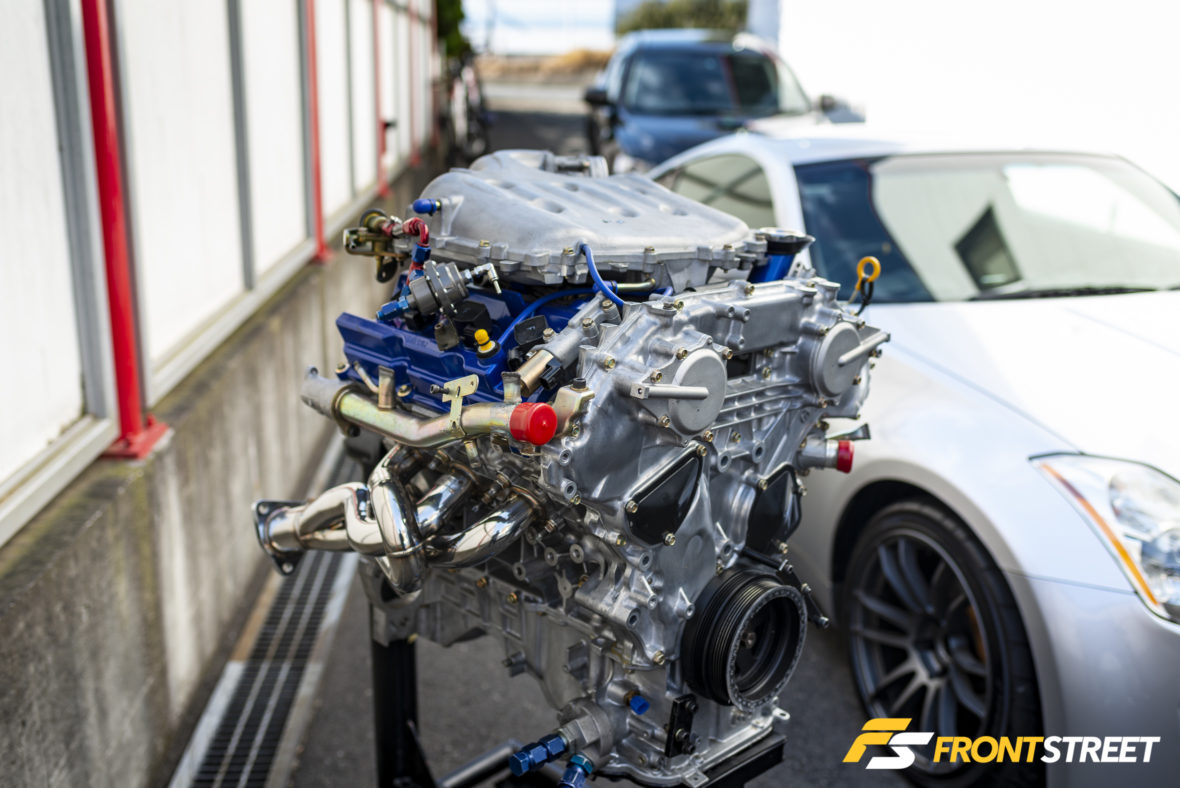
Alongside each chassis was the corresponding engine, completely outfitted with products from the company’s lineup, in a gorgeous display of what Tomei offers.




My favorite of the bunch was the Hirota B110 TS Cup Sunny. Present in its vintage racing glory, the car helped the company celebrate its 50th anniversary in style. The Tomei-built 1.3-liter racing engine looks right at home beneath the autographs of the legendary drivers of that era across the hood, like Kazuyoshi Hoshino and Masahiro Hasemi.



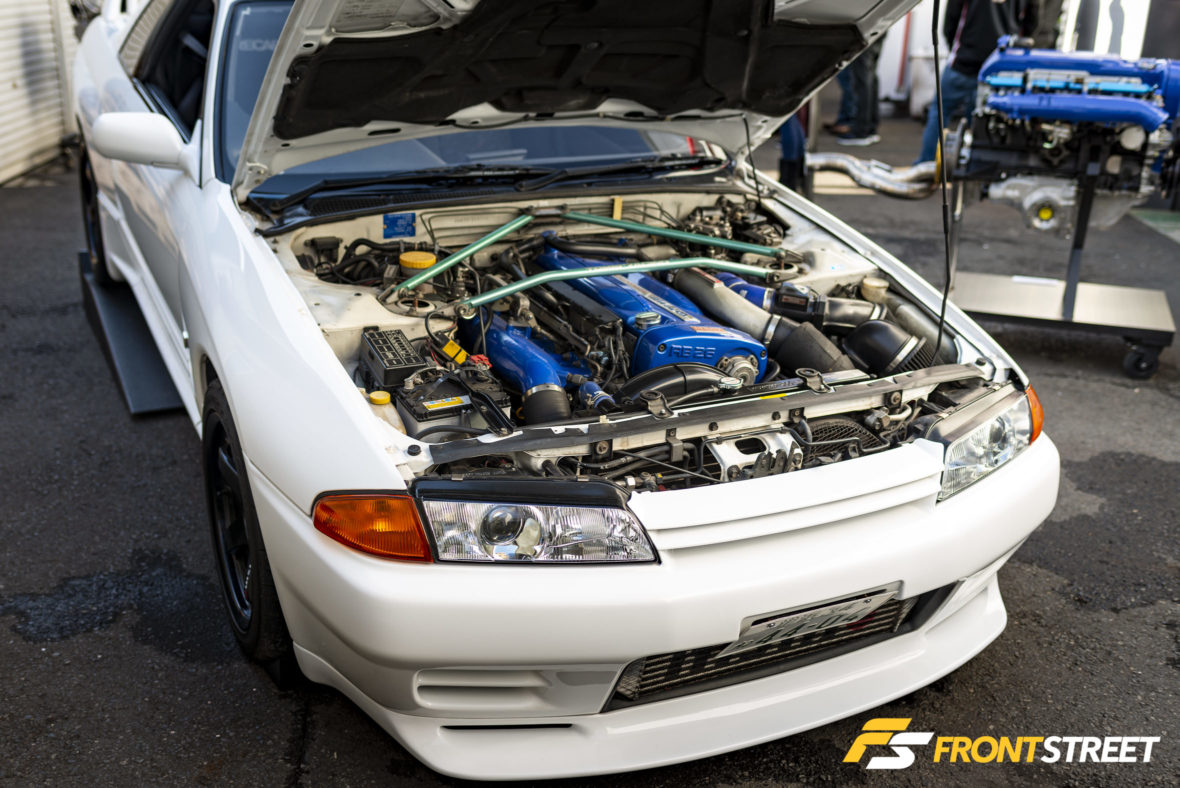


Then comes the glorious RB284G Genesis monster engine inside of this gorgeous R32 GT-R demo car. Equipped with twin Tomei ARMS turbochargers, this RB26DETT was hand-built, blueprinted, and assembled by Tomei and now sports a 2,738cc displacement with an 8.4:1 compression ratio, and is ready for whatever a customer wants to throw at it. The RB26DETT isn’t the only engine Tomei offers the Genesis package for, as customers can also purchase the SR20DET, 4G63, and EJ207 versions of this engine, with packages starting at around $20,000.
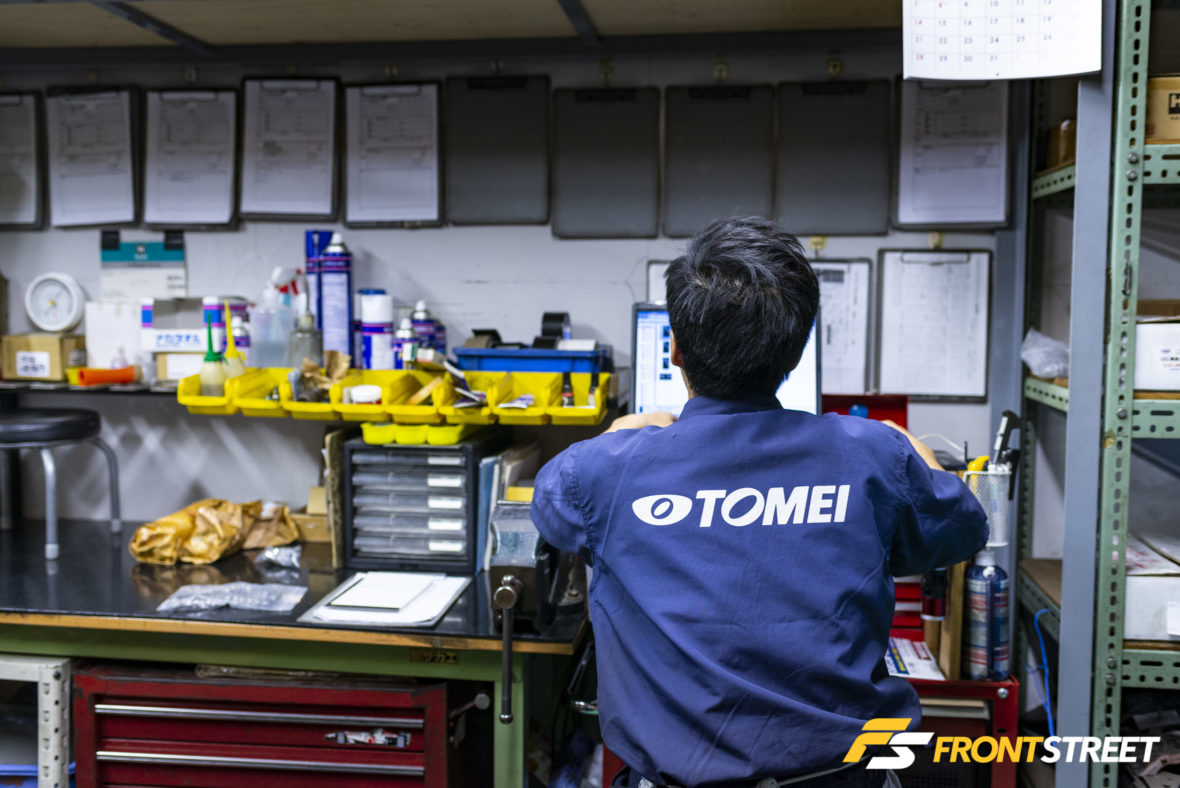




It was now time for our tour; we entered through the stock room, filled with boxed Tomei product, along with various disassembled bare engine blocks and their corresponding removed pieces finding sanctuary wherever there was room.


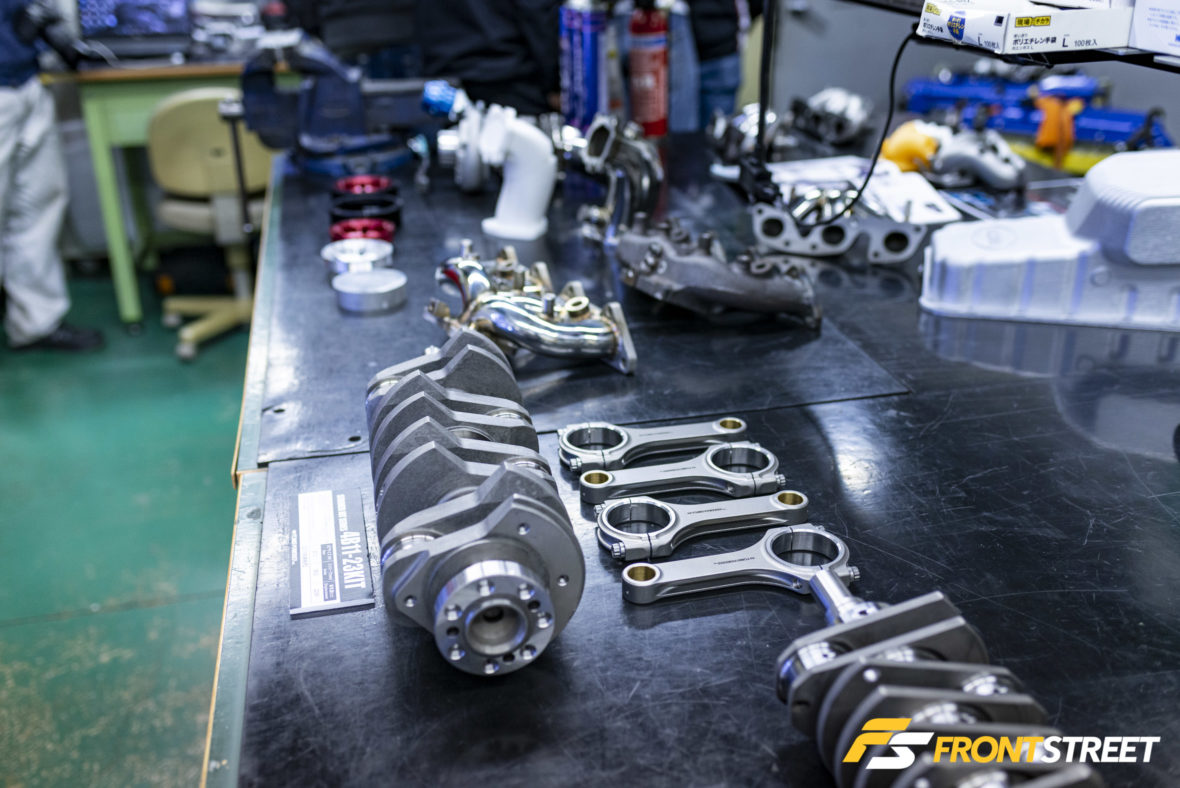

From there we entered one of the company’s many engine assembly rooms, which was specifically decorated for our tour, with internals, engine and turbos on display.




The corner of this same room housed their engine dyno, which was demonstrated for us with all of the ancillary hoses, sensors, and gauges hooked up, although, no actual screaming dyno pulls were ever measured.


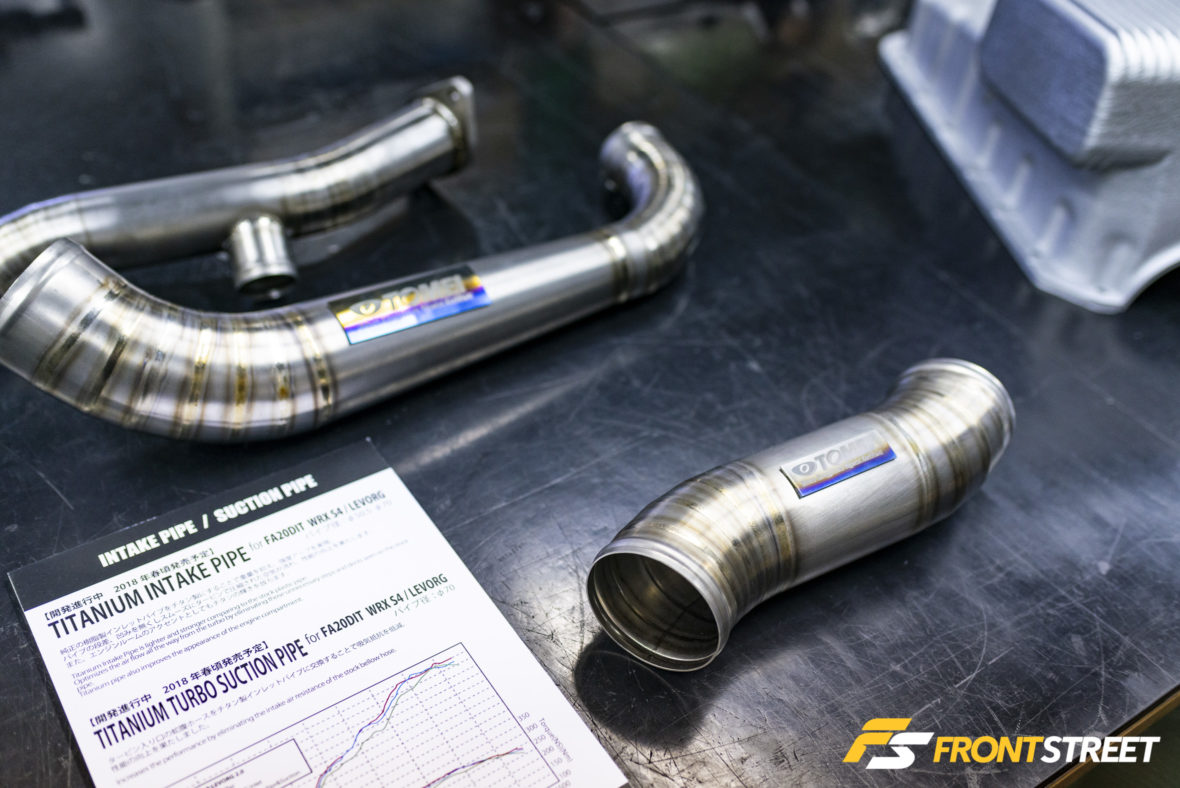

Various stages of parts manufacturing were also on display, including the 3D-printed plastic exhaust pieces used for product design, along with the original billet aluminum pieces used to bring the company’s pulleys to life. I also noticed only Wako’s oil products are used throughout the entire engine building process.


The corners of this same room contained bins labeled with engine codes, along with groups of machinery specifically used during the disassembly and cleaning process. Oh, what I would do for one of those bins…






We then entered the camshaft room, and were greeted by stacks of raw camshaft casts awaiting the trip to one of Tomei’s turning machines. This is also where each batch of finished camshafts was examined with a micrometer to ensure perfection before the next step of the process.






The next room was a favorite, where the final assembly process of the Genesis engine operation takes shape. Final measurements and specs of the engine’s blocks, heads, camshafts, pistons, rods, and crankshafts are all completed in this room before each piece is torqued to spec in its final resting place in the engine.


Before exiting back outside through the garage, I noticed some shelving covered in exhaust jigs, and old used titanium systems with their iconic blue hue. Even the scrap at Tomei is coveted!




The company then filled the remaining space of its driveway with the newest demo car, an R35-chassis Nissan GT-R fitted with a wild livery and the range of products the company offers for that platform.




The final step of the tour was into the main lobby of the office, where Tomei offers pint-sized versions of their expensive engines, along with keychains, stickers, plug covers, shift knobs, and other assorted gift ideas.


And that was it… my trip in Japan had concluded. A few of us from the tour packed up all of our stuff early, and headed back out for one more night in Tokyo. While I’m not currently in Japan writing this, the sights, experiences, and effect it had on my life will never be forgotten!










































